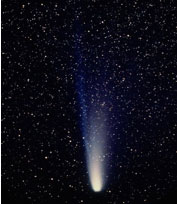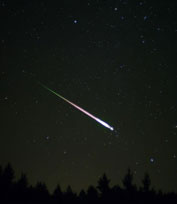Comets
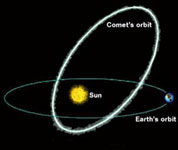
Comets are referred to as a “dirty snowballs” but they are about the size of a mountain. Comets are made of ice and dust. Comets orbit the sun in a very long, narrow elliptical path.
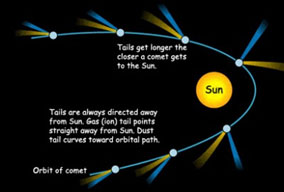
A comet has two main regions; the head and the tail. The head of a comet is the brightest part of the comet and is made up of the nucleus and the coma. The solid inner core of a comet, made of ice and dust, is called the nucleus. As a comet approaches the Sun, the heat energy in the sunlight turns the ice into gas, releasing water vapor and dust. The water vapor and dust form a fuzzy outer layer around the nucleus called a coma. Some of the comet’s gas and dust stream outward, forming the tail. Most comets have two tails; a gas tail and a dust tail. Both tails usually point away from the Sun due to solar winds. A comet’s tail can be more than 100 million kilometers long and stretch across most of the sky.
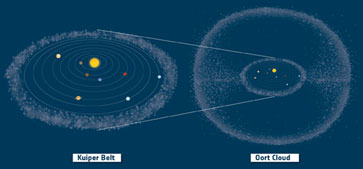
Most comets are found in one of two far away regions of the solar system. These regions are found beyond Pluto and are known as the Kuiper belt and the Oort cloud. The Kuiper belt is a doughnut-shaped region that extends from beyond Neptune’s orbit to about 100 times Earth’s distance from the sun. The Oort cloud is a spherical region of comets that surrounds the solar system out to more than 1,000 times the distance between Pluto and the Sun.
Asteroids
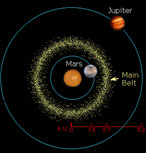
In the 1800s, astronomers discovered more than 300 objects between Mars and Jupiter. These objects, called asteroids, are too small and too numerous to be considered planets. Most asteroids are found in a region known as the asteroid belt. The asteroid belt is located between the orbits of Mars and Jupiter. Scientists believe that asteroids are the left over pieces of the solar system that never came together to form a planet.
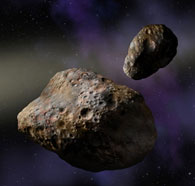
Asteroids are made up of solid rock. Most asteroids are small in size, measuring less than a kilometer in diameter. However, some can be quite large. Asteroids orbit the Sun in an elliptical path. Asteroids can break apart into smaller piece or can burn up due to friction. As the elliptical orbit brings an asteroid close to Earth, it could collide with the planets. One or more large asteroids did hit Earth about 65 million years ago. This impact is thought to have caused the extinction of many animals, including the dinosaurs.
Meteoroids
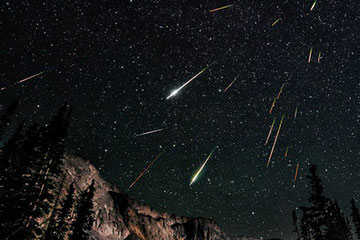
A meteoroid is a piece of rock or dust in space. Meteoroids come from comets or asteroids. Some meteoroids are formed when asteroids collide in space. Other meteoroids form when a comet breaks up and creates a cloud of dust that continues to move through the solar system. When Earth passes through one of these dust clouds, bits of dust enter Earth’s atmosphere. When a meteoroid enters Earth’s atmosphere, friction with the air creates heat and produces a streak of light in the sky and is called a
meteor.
When you see a shooting star in the sky, this is actually a meteor. During a meteor shower, tens to hundreds of meteors can be seen each hour. Many of these meteor showers can be predicted and occur at the same time each year. If the meteoroid is large enough, it may not burn up completely and can hit Earth. These are called
meteorites.



